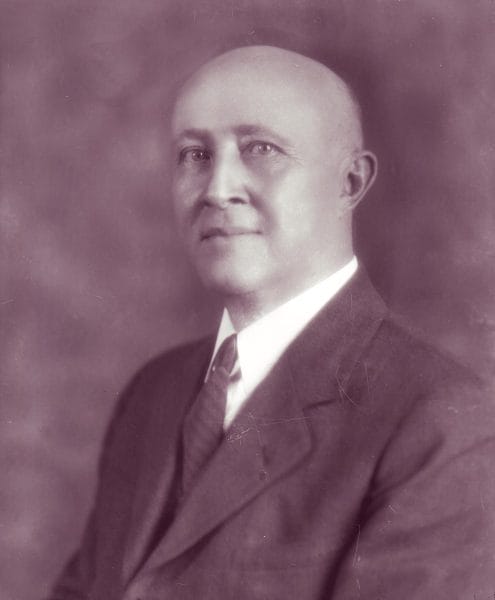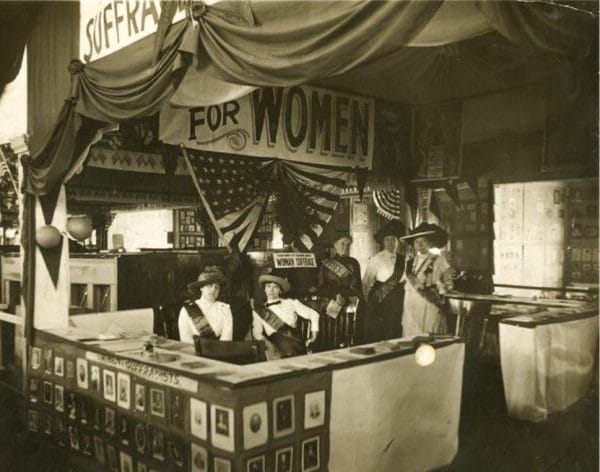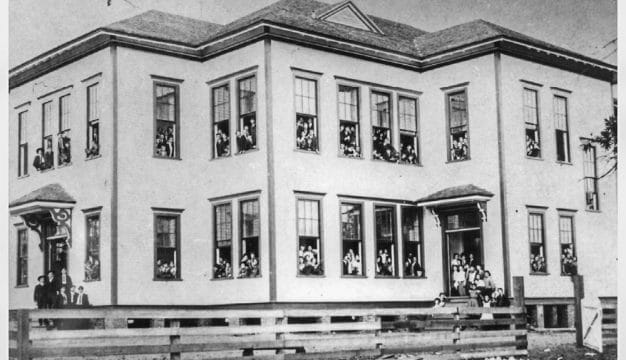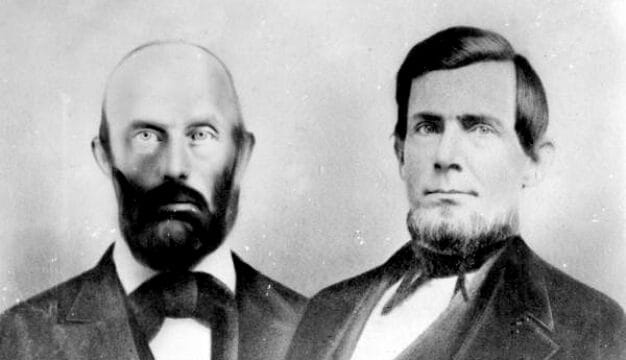Pattie Ruffner Jacobs
 Pattie Ruffner Jacobs
Pattie Ruffner Jacobs (1875-1935) was one of the foremost crusaders for women’s right to vote in Alabama. She began her social reform efforts working to end child labor but gained fame for her work in the woman suffrage movement. While listening to a speech in 1910 by Jane Addams, renowned social reformer and advocate of woman suffrage, Jacobs realized that women needed the right to vote to bring about true social change. The following year, she led the founding of the Birmingham Equal Suffrage Association (BESA). She was elected its first president, and within a year the members of BESA began working to form a statewide suffrage organization. The Alabama Equal Suffrage Association (AESA) was created in October 1912. Upon her election as president of the AESA, Jacobs became the youngest president of any state suffrage association in the United States. Through her work with the AESA, Jacobs gained national recognition as one of the foremost suffrage leaders in the South, eventually obtaining a position on the board of the National American Woman Suffrage Association (NAWSA).
Pattie Ruffner Jacobs
Pattie Ruffner Jacobs (1875-1935) was one of the foremost crusaders for women’s right to vote in Alabama. She began her social reform efforts working to end child labor but gained fame for her work in the woman suffrage movement. While listening to a speech in 1910 by Jane Addams, renowned social reformer and advocate of woman suffrage, Jacobs realized that women needed the right to vote to bring about true social change. The following year, she led the founding of the Birmingham Equal Suffrage Association (BESA). She was elected its first president, and within a year the members of BESA began working to form a statewide suffrage organization. The Alabama Equal Suffrage Association (AESA) was created in October 1912. Upon her election as president of the AESA, Jacobs became the youngest president of any state suffrage association in the United States. Through her work with the AESA, Jacobs gained national recognition as one of the foremost suffrage leaders in the South, eventually obtaining a position on the board of the National American Woman Suffrage Association (NAWSA).
 Young Pattie Ruffner
Pattie Ruffner Jacobs was born Pattie Belle Ruffner on October 2, 1875, to Lewis and Virginia Ruffner. Originally from Virginia, where her uncle Henry Ruffner was president of Washington and Lee University, the family had moved to Malden, West Virginia, by the time of Pattie’s birth. Soon after she was born, her family moved to Nashville, Tennessee, where she spent her youth and early teens. Her father ran a successful mercantile business, and her mother, who had been well educated, saw to it that her six children, both boys and girls, received an education as well. Pattie, the youngest, attended Ward Seminary, now Belmont University, in Nashville and graduated in 1893. That same year, her father died. She and her mother went to live with her older sister, Bertha Ruffner Jones, in Birmingham, Alabama. For the next year, Pattie continued her education at the Birmingham Training School for Teachers. Upon graduation, she moved to New York City to study art and music. She returned to Birmingham in 1896.
Young Pattie Ruffner
Pattie Ruffner Jacobs was born Pattie Belle Ruffner on October 2, 1875, to Lewis and Virginia Ruffner. Originally from Virginia, where her uncle Henry Ruffner was president of Washington and Lee University, the family had moved to Malden, West Virginia, by the time of Pattie’s birth. Soon after she was born, her family moved to Nashville, Tennessee, where she spent her youth and early teens. Her father ran a successful mercantile business, and her mother, who had been well educated, saw to it that her six children, both boys and girls, received an education as well. Pattie, the youngest, attended Ward Seminary, now Belmont University, in Nashville and graduated in 1893. That same year, her father died. She and her mother went to live with her older sister, Bertha Ruffner Jones, in Birmingham, Alabama. For the next year, Pattie continued her education at the Birmingham Training School for Teachers. Upon graduation, she moved to New York City to study art and music. She returned to Birmingham in 1896.
 Solon Jacobs
In 1898, Pattie Ruffner married Solon “Sol” Jacobs, who was 10 years her senior. They had two daughters, Madeline and Virginia. Sol Jacobs founded the Birmingham Slag Company prior to their marriage. His financial success allowed Pattie the freedom to work as a volunteer and travel to promote her causes. She attended conventions around the nation and made speeches across Alabama on behalf of suffrage. With her husband’s financial support, Ruffner Jacobs sponsored meetings, offered monetary prizes for essays on suffrage, and backed the free distribution of the Woman’s Journal, published by the American Woman Suffrage Association. More important than Solon Jacobs’s financial support was his encouragement and emotional support of her activities. At a time when many men would not allow their wives to attend public lectures, much less speak in public, Solon Jacobs encouraged his wife to do both.
Solon Jacobs
In 1898, Pattie Ruffner married Solon “Sol” Jacobs, who was 10 years her senior. They had two daughters, Madeline and Virginia. Sol Jacobs founded the Birmingham Slag Company prior to their marriage. His financial success allowed Pattie the freedom to work as a volunteer and travel to promote her causes. She attended conventions around the nation and made speeches across Alabama on behalf of suffrage. With her husband’s financial support, Ruffner Jacobs sponsored meetings, offered monetary prizes for essays on suffrage, and backed the free distribution of the Woman’s Journal, published by the American Woman Suffrage Association. More important than Solon Jacobs’s financial support was his encouragement and emotional support of her activities. At a time when many men would not allow their wives to attend public lectures, much less speak in public, Solon Jacobs encouraged his wife to do both.
Jacobs led the AESA from 1912 to 1916. As president of the association, she oversaw the opening of the group’s headquarters in downtown Birmingham. She encouraged all women interested in suffrage to speak out publicly or at least participate in a “voiceless speech,” which involved standing in a store window and turning pages in a suffragist pamphlet for passers-by to read. When the Alabama Legislature met in 1915, the AESA, under Jacobs’s leadership, presented a petition with more than 10,000 signatures asking the legislators to place a suffrage amendment on the ballot. When the amendment was rejected, Jacobs decided that the only hope for achieving the vote was through an amendment to the U.S. Constitution. She resigned her post with the AESA and took a position as second auditor on the board of NAWSA from 1916 to 1918. She also served as a member of the NAWSA congressional committee, which lobbied Congress to give women the right to vote. As the United States entered World War I, Alabama suffragists took up war work to demonstrate their patriotism, and it was in this vein that Jacobs headed the Alabama division of the National Woman’s Liberty Loan Committee.
 Women’s Suffrage Booth, 1914
In 1920, women throughout the United States gained the right to vote when the Nineteenth Amendment to the U.S. Constitution was ratified, although Alabama had rejected it. Because of this enfranchisement, the Alabama Democratic Party named Jacobs as the first woman to represent them on the national committee. She had resumed the presidency of the Alabama Equal Suffrage Association from 1918 to 1920 and oversaw the transformation of the AESA into the League of Women Voters. She went on to become a member of the national League of Women Voters’ board. Having gained the vote, she renewed her efforts to abolish child labor and the convict-lease system. Under the presidency of Franklin D. Roosevelt, she headed the women’s division of the Consumers’ Advisory Board and served as a spokesperson for the Tennessee Valley Authority in Alabama.
Women’s Suffrage Booth, 1914
In 1920, women throughout the United States gained the right to vote when the Nineteenth Amendment to the U.S. Constitution was ratified, although Alabama had rejected it. Because of this enfranchisement, the Alabama Democratic Party named Jacobs as the first woman to represent them on the national committee. She had resumed the presidency of the Alabama Equal Suffrage Association from 1918 to 1920 and oversaw the transformation of the AESA into the League of Women Voters. She went on to become a member of the national League of Women Voters’ board. Having gained the vote, she renewed her efforts to abolish child labor and the convict-lease system. Under the presidency of Franklin D. Roosevelt, she headed the women’s division of the Consumers’ Advisory Board and served as a spokesperson for the Tennessee Valley Authority in Alabama.
Pattie Ruffner Jacobs died of a heart attack at the age of 60 on December 22, 1935. Although she never saw Alabama ratify the Nineteenth Amendment, she was able to begin casting her ballot beginning in 1920. The Alabama Legislature finally signed the Nineteenth Amendment in 1953, 18 years after Jacobs’s death. In her lifetime, Jacobs brought women’s rights and social reform to the attention of lawmakers by demanding the vote. In recognition of her work on behalf of the women of Alabama and her contributions to the well-being of all Alabamians, Pattie Ruffner Jacobs was inducted into the Alabama Women’s Hall of Fame in 1978.
Further Reading
- Thomas, Mary Martha, ed. Stepping Out of the Shadows: Alabama Women, 1819-1990. Tuscaloosa: University of Alabama Press, 1995.
- Wheeler, Marjorie Spruill. New Women of the New South: The Leaders of the Woman Suffrage Movement in the Southern States. New York: Oxford University Press, 1993.
- Yelverton, Midred Griffin. They Also Served: Twenty-Five Remarkable Alabama Women. Dothan, Ala.: Ampersand Publishing, 1993.



